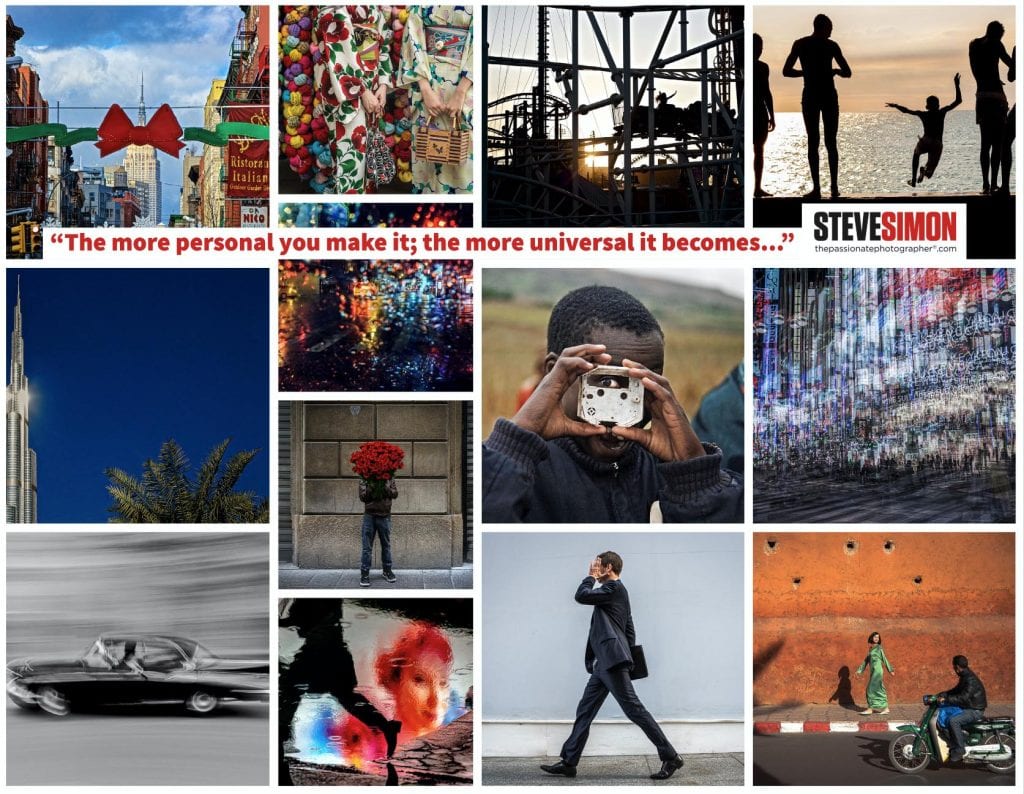

So many of us are using zooms these days, and with good reason. The quality of many zoom lenses rival that of prime lenses, which have traditionally maintained optical superiority. I’m constantly amazed at image quality with zoom lenses, even with smaller, slower versions. With mirrorless cameras it seems the optical designs have allowed for even better quality from them.
Zooms offer the flexibility of different focal lengths and can be a great advantage when we’re limited to specific camera positions.
But for new photographers in particular, zooms present an overabundance of choices, where too much freedom can have a down side, adding to the overwhelming number of decisions that already have to be made. You may not know where to start, which can lead to frustration.
For artists, restrictions can be liberating, forcing us to deal with limitations and problem solve. I suggest using fixed focal-length lenses when you hit the compositional dance floor, or with zoom lenses, keep them racked to near or at either extreme, and zoom with your feet, as Diane Arbus suggested.
Once you’ve danced your way to the ideal shooting position, then tweak the zoom ring for final framing. I tend to keep the scene a bit loose, allowing me the flexibility of finishing my framing by maintaining my aspect ratio or image shape and cropping, even slightly if the result is a stronger more dynamic composition.
But there’s no substitute for you physically moving during the dance. You will find out that as you gain experience doing the compositional dance, you start to fast track unconsciously to the best shooting positions. Aside from framing, there are more choices to be made. Decisions about camera angle, shutter speed, aperture, distance, light, and the moment the picture is taken all have profound effects on what will be emphasized and communicated in the final photograph.
By working through a number of these technical scenarios, you can later determine what best resembles your vision of the scene. Give yourself options. Try them all and learn. Working the scene allows you to make strong images with subtle degrees of difference. And with experience, you will have a clearer idea of which technical approaches to employ.
In the chaotic world we photograph, we have some control by choosing how we work. Different lenses, from wide angle to telephoto, change and alter shapes and relationships between foreground and background objects. You know that slight changes can mean the difference between a three and five-star image.
Longer lenses give flatter, more compressed perspectives; wide angle lenses can tell more of the story by including more in the frame. The wide-angle communication can feel more intimate when you are physically closer to your subject.
As fluid as the compositional dance is, when time allows, it’s a good idea to stop, think, and strategize because there are lots of decisions that need to be made. Choosing selective focus or maximum depth of field; blurring through slow exposures or stopping the motion entirely; determining sharpness and clarity—each of these decisions tells a different story. We decide what story to tell. Often, you need to work through a number of these technical scenarios to determine what best resembles your vision of the scene.
My personal preference is to use wide-angle lenses most often for a more intimate depiction of the subject and scene that I prefer. Just be careful when you use them. Whenever possible, keep the lens as square to the subject as possible to minimize distortion. I’m also careful when using very wide lenses. I don’t want the first thing the viewer of my image says to be, “Wow, that’s a wide-angle lens that took that.”
I want the viewer to see the content first. This is why extreme wide angles should be used carefully and with caution. Personally, I find it difficult to use extreme wide angles well (wider than 24mm on a full-frame-sensor camera). In my own shooting, I find it only on rare occasions that an extreme wide angle is called for.
I love cameras that have articulating screens, which let me play with new angles and camera positions more comfortably. They let me get low to the ground, or hold the camera high above my head and make deliberate compositions (since I can easily see the screen in these positions), move focus points, and trigger the shutter. Some cameras let you touch the area of the view screen you want to focus on, and the camera then focuses and shoots, sometimes silently, which feels like a cloaking device for a street shooter like me, facilitating images never before possible. More to come.











Interesting article – love the Canada article too but have to spend more time looking at the pictures and combinations of photographs in that major production.
I like zooms because I love taking nature shots and they work best for me but I will try to use my feet more often for compositions if at all possible. Thanks for this
Thanks Carol, hope you’re doing well.